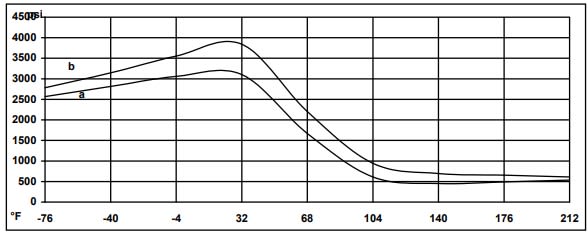Enhanced TDS
Identification & Functionality
- Chemical Family
- RTU Product Type
- Technologies
- Product Families
Features & Benefits
- Ready-to-Use Product Features
- Product Features
- Good UV stability
- Ideal for bonding thermoplastics
- Low shrinkage
- Flexible
- Room temperature curing
Applications & Uses
- Application Area
- Compatible Substrates & Surfaces
Properties
- Physical Form
Regulatory & Compliance
- Certifications & Compliance
Technical Details & Test Data
- Processing Information
Pretreatment
The strength and durability of a bonded joint are dependant on proper pretreatment of the surfaces to be bonded. At the very least, joint surfaces should be cleaned with a good degreasing agent such as acetone, iso-propanol (for plastics) or other proprietary degreasing agents in order to remove all traces of oil, grease and dirt. Low grade alcohol, gasoline, or paint thinners should never be used. The strongest and most durable joints are obtained by either mechanically abrading or chemically etching ("pickling") the degreased surfaces. Abrading should be followed by a second degreasing treatment.Araldite 2018 structural adhesive is available in cartridges incorporating mixers and can be applied as ready to use adhesive with the aid of the tool recommended by Huntsman Advanced Materials.
Application of adhesive
The resin/hardener mix may be applied manually or robotically to the pretreated and dry joint surfaces. Huntsman's technical support group can assist the user in the selection of a suitable application method as well as suggest a variety of reputable companies that manufacture and service adhesive dispensing equipment. A layer of adhesive 0.002 to 0.004 in (0.05 to 0.10 mm) thick will normally impart the greatest lap shear strength to the joint. Huntsman stresses that proper adhesive joint design is also critical for a durable bond. The joint components should be assembled and secured in a fixed position as soon as the adhesive has been applied.
Equipment maintenance
All tools should be cleaned with hot water and soap before adhesives residues have had time to cure. The removal of cured residues is a difficult and time-consuming operation. If solvents such as acetone are used for cleaning, operatives should take the appropriate precautions and, in addition, avoid skin and eye contact.
Time to minimum shear strength
Temperature (°C)
Cure time to reach LSS > 145 psi (1MPa) Cure time to reach LSS > 1450 psi (10MPa)
Hours Minutes 50 16 45 59 12 25 73 4 48 104 20 16 140 16 3 212 3 12 Typical Cured Properties
Unless otherwise stated, the figures given below were all determined by testing standard specimens made by lap- jointing 4.5 x 1 x 0.063 in (114 x 25 x 1.6 mm) strips of aluminum alloy. The joint area was 0.5 x 1 in (12.5 x 25 mm) in each case. The figures were determined with typical production batches using standard testing methods. They are provided solely as technical information and do not constitute a product specification.
Average lap shear strengths of typical metal-to-metal joints (ISO 4587)
Cured for 16 hours at 40℃ and tested at 23℃ Pretreatment - Sand blasting
Substrate Lap Shear Strength (psi) Aluminum 1015 Steel 37/11 1160 Stainless steel V4A 1015 Galvanized steel 1523 Copper 580 Brass 653 Average lap shear strengths of typical plastic-to-plastic joints (ISO 4587)
Cured for 16 hours at 104°F and tested at 73°F. Pretreatment - Lightly abrade and alcohol degrease.
Substrate Lap Shear Strength (psi) GRP 1160 CFRP 1204 SMC 1015 ABS 1001 PVC 580 PMMA 537 Polycarbonate 899 Polyamides 421 Lap shear strength versus temperature (ISO 4587) (typical average values)
Cure: (a) = 7 days / 73°F; (b) = 24 hours / 73°F and 30 minutes / 176°F
Roller peel test (ISO 4578)
Cured 16 hours / 40°C 23 pli (4.0 N/mm)Flexural Properties (ISO 178) Cure 16 hours/ 40°C tested at 23°C
Flexural Strength 215 psi (1.48 MPa)
Flexural Modulus 2321 psi (16 MPa)Elongation at break 45%
Lap shear strength versus immersion in various media (typical average values)
Unless otherwise stated, L.S.S. was determined after immersion for 90 days at 73°F (23°C)Time As-made value IMS Gasoline (petrol) Ethyl acetate Acetic acid, 10% Xylene Lubricating oil Paraffin Water at 73°F Water at 140°F Water at 194°F 30 days 0 Degraded 1008 Degraded 497 357 843 1046 383 508 508 60 days 0 Degraded 383 Degraded 229 13 599 970 587 435 290 90 days 1123 Degraded 854 Degraded 64 0 1263 1263 473 363 145 Lap shear strength versus tropical weathering
(40/92, DIN 50015; typical average values) Cure: 16 hours / 104°F (40C); Tested at 73°F (23°C)Time Lap Shear Strength (psi)
As-made value 1160 After 30 days 402 After 60 days 415 After 90 days 566 Lap shear strength versus heat ageing
Cure: 16 hours / 104°F (40℃)Time Lap Shear Strength (psi)
As-made value 1073 30 days / 158°F 1958 60 days / 158°F 1784 90 days / 158°F 2611 Thermal cycling
100 cycles of 6 hour duration from -22°F to 158°F (-30°C to 70°C): 1276 psi (8.8 MPa)
Safety & Health
- Handling Precautions
To protect against any potential health risks presented by our products, the use of proper personal protective equipment (PPE) is recommended. Eye and skin protection is normally advised. Respiratory protection may be needed if mechanical ventilation is not available or is insufficient to remove vapors. For detailed PPE recommendations and exposure control options consult the product MSDS or a Huntsman EHS representative.
Packaging & Availability
- Packaging Type
- Regional Availability
Storage & Handling
- Storage Conditions
ARALDITE® 2018 A/Bs may be stored for up to one year at room temperature provided the components are stored in sealed containers. The expiry date is indicated on the label. Cartridges should not be stored for long periods after removal from the foil overpack.
Other
- Appearance
- Pale opaque
- Application Information
Value Units Test Method / Conditions Mix Ratio 0.95 - Hardener : Resin - Physical Properties
Value Units Test Method / Conditions Specific Gravity approx. 1.13 - Viscosity approx. 8000.0 cPs cPs at 77°F
